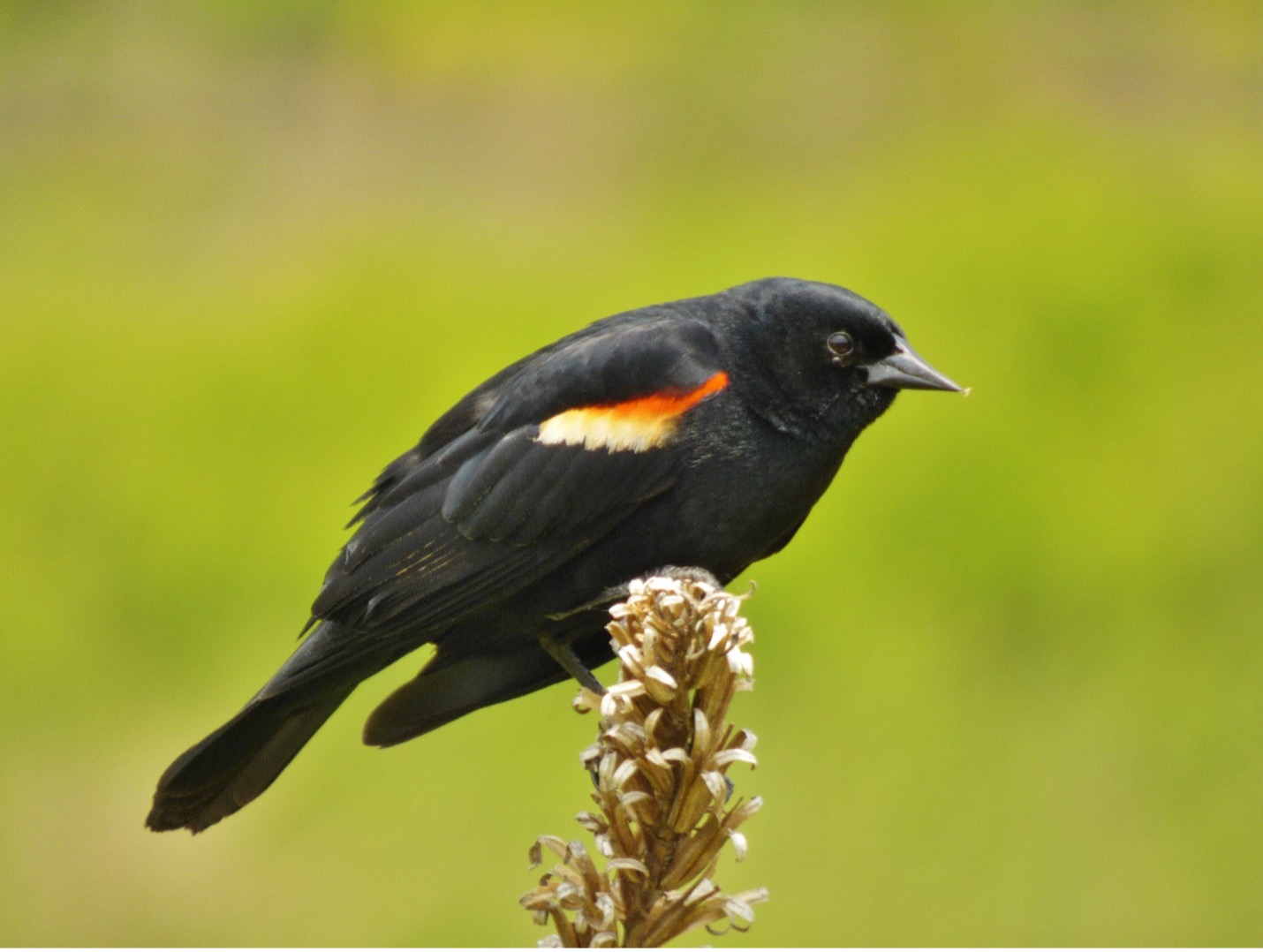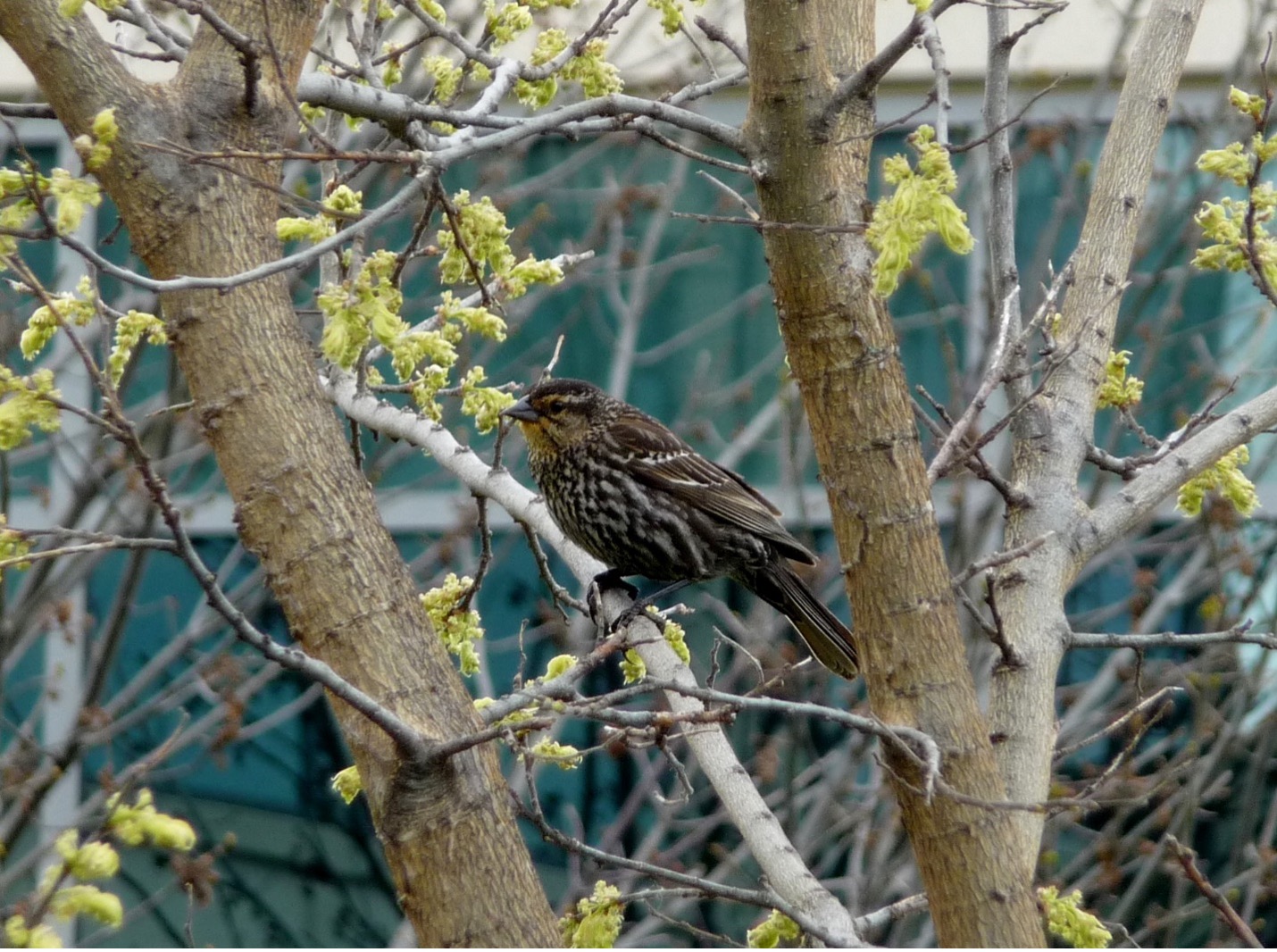

APPEARANCE
Red-winged Blackbirds are a chunky bird around the size of a robin. They are sexually dimorphic, which means the males and females look different. Males are pitch black with bright red and yellow patches on their shoulders. Females are a streaky cryptic brown to help them camouflage.
BEHAVIOR
Red-winged blackbirds are extremely territorial during nesting and will attack anything that comes too close to their nesting grounds. This includes pets, people, and other birds. When not nesting, they will flock together with other blackbirds for safety.
DIET
Red-winged blackbirds are omnivorous, eating primarily insects in summer and seeds in fall and winter. They can do damage to grain crops.
HABITAT
Traditionally wetland birds, red-winged blackbirds have expanded their range to include many urban environments due to the prevalence of retention ponds. When flocking and migrating, they follow their food source, mobbing feeders and agricultural crops.
NESTING
Red-winged blackbirds prefer tall vegetation like cattails to weave their cup like nests into. However, they will nest in trees and bushes as well. They are harem breeders, with one male holding a territory and breeding with multiple females. They are very aggressive and territorial while nesting.
MIGRATION
Red-winged blackbirds are resident birds in our area, only migrating short distances to find food and water. They typically do not go far from their nesting areas year round.
ISSUES CAUSED BY RED-WINGED BLACKBIRDS:
- Aggression during nesting season towards people and pets
HOW TO MANAGE ISSUES WITH RWBB
- Exclude birds from nesting areas using netting
- Harassment of birds with lasers
- Consistent removal of nesting material before eggs are laid to prevent territorial aggression
Sources: The Audubon Society, Cornell Lab of Ornithology bird guide, Humane Society of the United States, Internet Center for Wildlife Damage Management, Nest Watch
